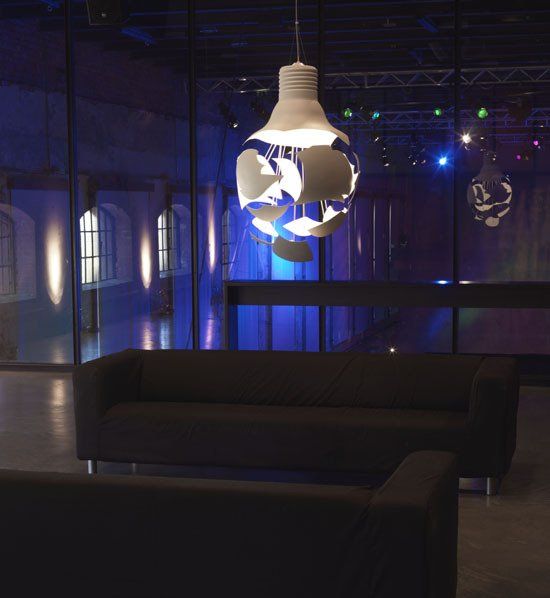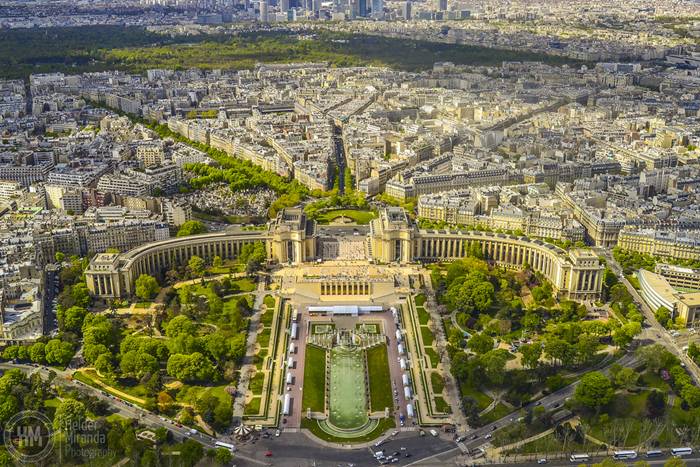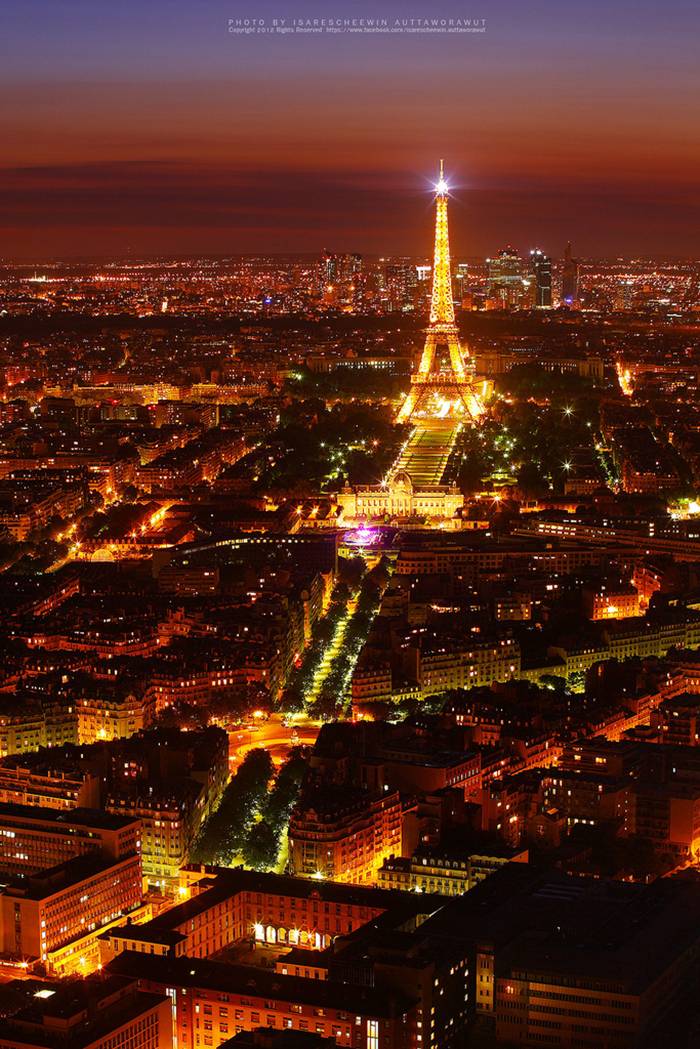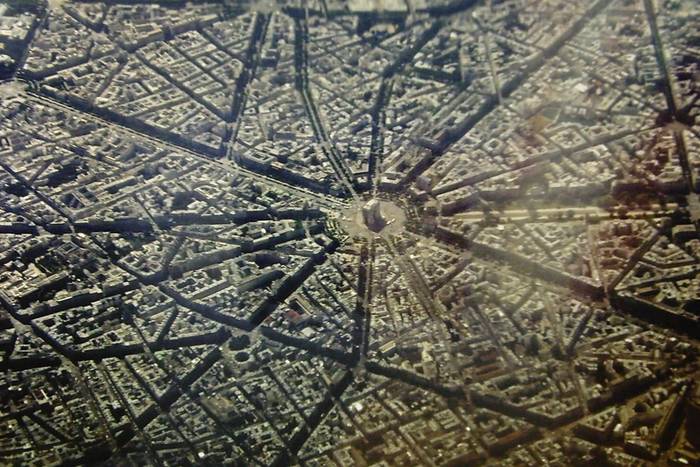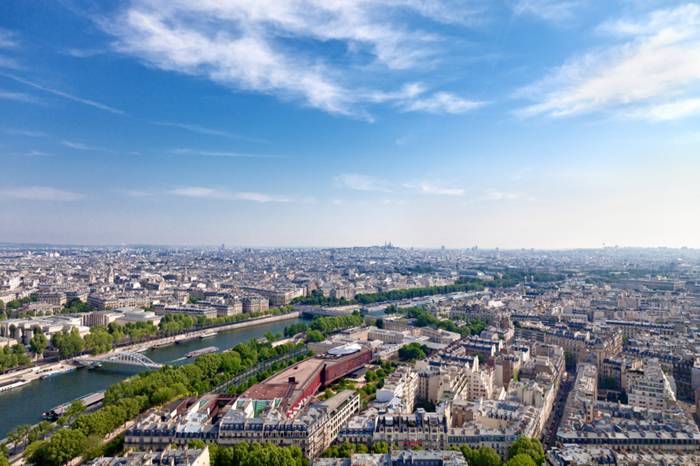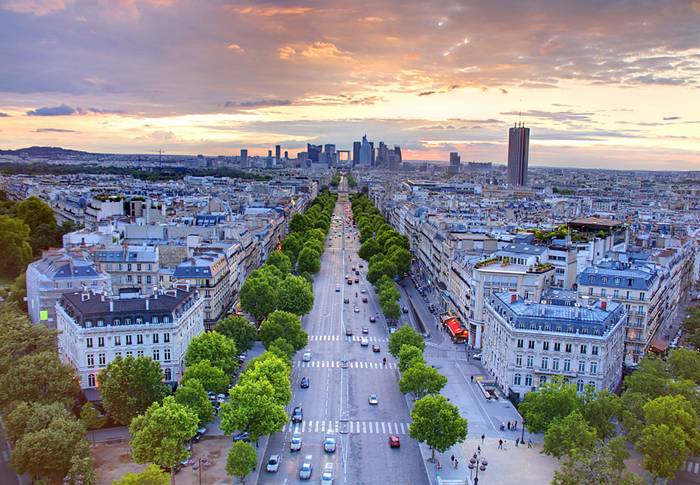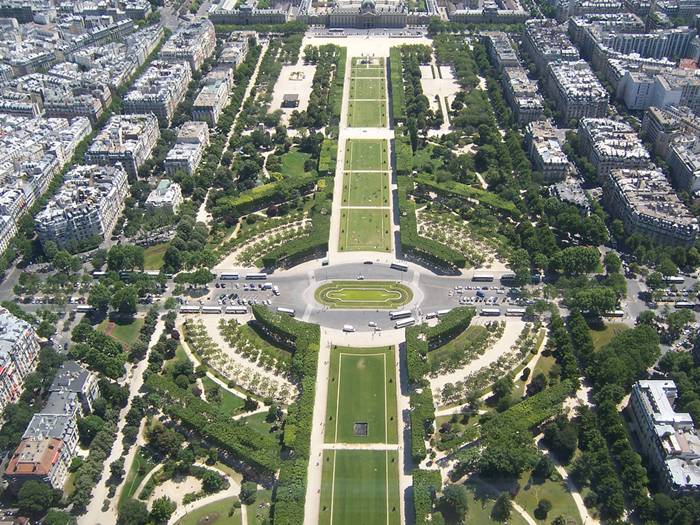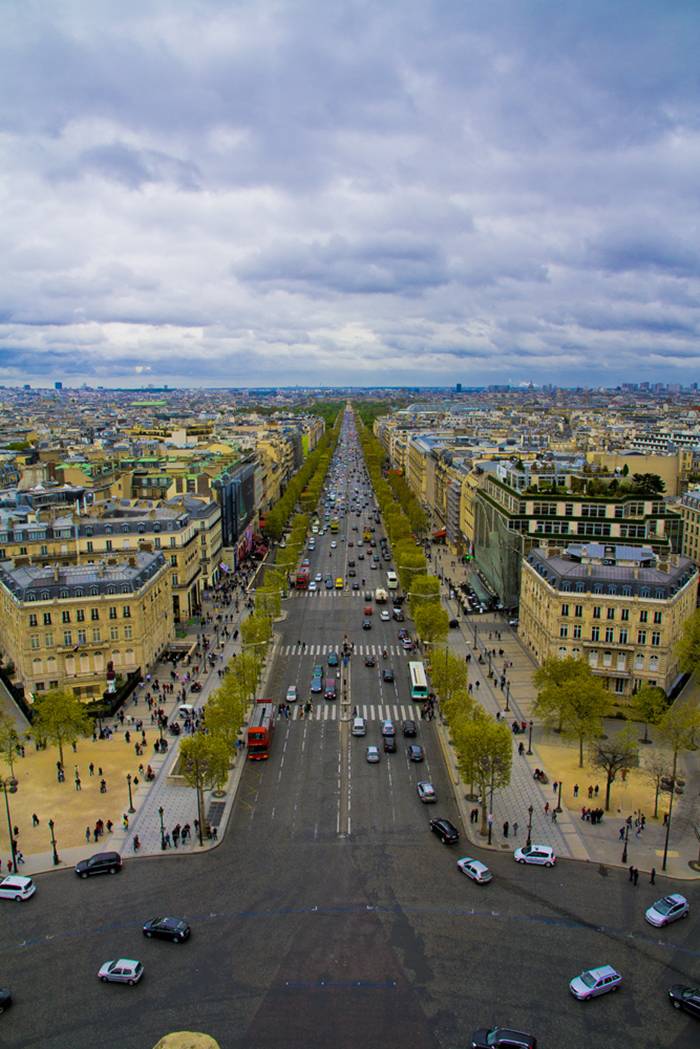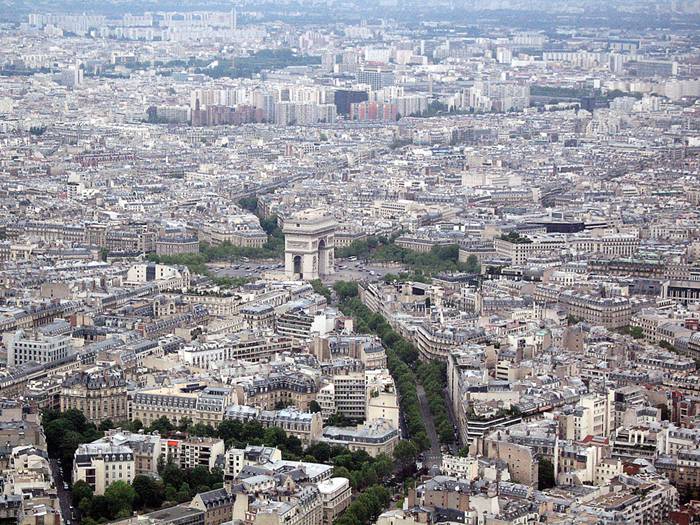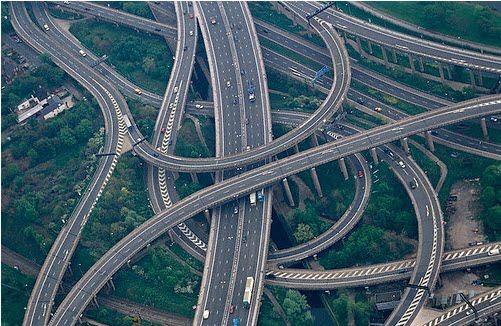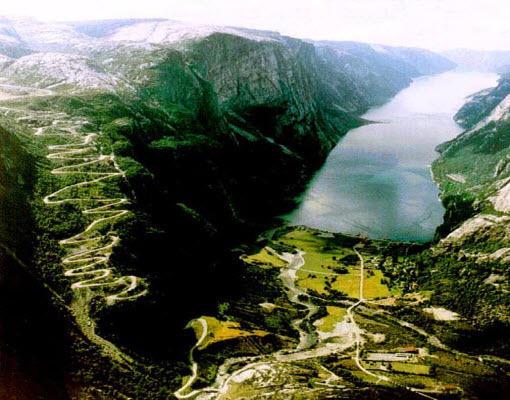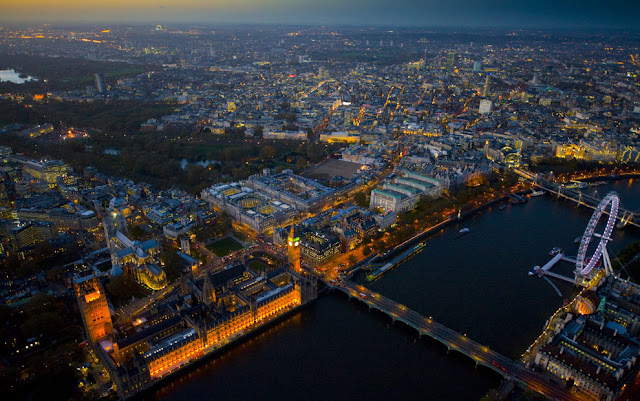Reuters
Reuters
source TITLIS Cliff Walk - The Highest Suspension Bridge In Europe, Nice n Funny
Curved Suspension Bridge - Malaysia
The height of the bridge 700 meters, it is found in Malaysia, the spectacle of amazing. this bridge is located inside the Oriental Village compound in Teluk Burau
Great Belt Bridge
The Great Belt is a Bridge between the Danish islands of Zealand and Funen across the Great Belt. It consists of a road suspension bridge and railway tunnel between Zealand and the island Sprogø, as well as a box girder bridge between Sprogø and Funen. The "Great Belt Bridge" (Danish: Storebæltsbroen) commonly refers to the suspension bridge, although it may also be used to mean the beam bridge or the link in its entirety. The suspension bridge, known as the East Bridge, has the world's third longest main span (1.6 km), and the longest outside of Asia.
Jade Belt Bridge
The Jade Belt Bridge off the west coast of Kunming Lake in the Summer Palace of Emperor Qianlong was built in 1751-64 years. It was arranged in a way to allow Imperial boats to pass under.
source Jade Belt Bridge, Nice n Funny
source Jade Belt Bridge, Nice n Funny
Magdeburg Water Bridge - Germany
The Magdeburg Water Bridge is a navigable aqueduct in Germany that connects the Elbe-Havel Canal to the Mittelland Canal, and allows ships to cross over the Elbe River. At 918 meters, it is the longest navigable aqueduct in the world. The Elbe-Havel and Mittelland canals had previously met near Magdeburg but on opposite sides of the Elbe. Ships moving between the two had to make a 12-kilometer detour, descending from the Mittelland Canal through the Rothensee boat lift into the Elbe, then sailing downstream on the river, before entering the Elbe-Havel Canal through Niegripp lock. Low water levels in the Elbe often prevented fully laden canal barges from making this crossing, requiring time-consuming off-loading of cargo.
Construction of the water link was started as early as in the 1930s but due to the World War 2 and subsequent division of Germany the work remained suspended till 1997. The aqueduct was finally completed and opened to the public in 2003.





source Magdeburg Water Bridge - Germany, Nice n Funny
Construction of the water link was started as early as in the 1930s but due to the World War 2 and subsequent division of Germany the work remained suspended till 1997. The aqueduct was finally completed and opened to the public in 2003.
source Magdeburg Water Bridge - Germany, Nice n Funny
National Geographic Amazing Deep Blue Photos
Amazing Photos Below and Above Water
Eric Cheng
Yungas Road - The Bolivian Road of Death!
source Yungas Road - The Bolivian Road of Death!, Nice n Funny
source Yungas Road - The Bolivian Road of Death!, Nice n Funny
The North Yungas Road, also known as El Camino de la Muerte (Spanish for "Road of Death"), is a 43 mile road that leads from La Paz to Coroico, 35 miles (56 km) northeast of La Paz in the Yungas region of Bolivia.
A second Yungas Road, known as Chulumani Road, connects La Paz to Chulumani, 40 miles (64 km) east of La Paz. It is considered to be nearly as dangerous as the north road.
A second Yungas Road, known as Chulumani Road, connects La Paz to Chulumani, 40 miles (64 km) east of La Paz. It is considered to be nearly as dangerous as the north road.



The Yungas Road is legendary for its extreme danger.
In 1995 the Inter-American Development Bank christened it as the "world's most dangerous road". One estimate is that 200-300 travelers are killed yearly along the road, or one vehicle every two weeks. The road moreover includes Christian crosses marking many of the spots where such vehicles have fallen.
Upon leaving La Paz, the road first ascends up to around 5km, before descending to 1079 ft (330 m), transitioning quickly from cool altiplano terrain to rain forest as it winds through very steep hillsides and atop cliffs.
The road was built in the 1930s during the Chaco War by Paraguayan prisoners. It is one of the few routes that connects the Amazon rainforest region of northern Bolivia, or Yungas, to its capital city. However, an alternative, much safer, road connecting La Paz to Coroico is nearing completion.
Because of the extreme dropoffs, single-lane width, and lack of guardrails, the road is extremely dangerous. Further still, rain and fog can make visibility precarious, the road surface muddy, and loosen rocks from the hillsides above.
In 1995 the Inter-American Development Bank christened it as the "world's most dangerous road". One estimate is that 200-300 travelers are killed yearly along the road, or one vehicle every two weeks. The road moreover includes Christian crosses marking many of the spots where such vehicles have fallen.
Upon leaving La Paz, the road first ascends up to around 5km, before descending to 1079 ft (330 m), transitioning quickly from cool altiplano terrain to rain forest as it winds through very steep hillsides and atop cliffs.
The road was built in the 1930s during the Chaco War by Paraguayan prisoners. It is one of the few routes that connects the Amazon rainforest region of northern Bolivia, or Yungas, to its capital city. However, an alternative, much safer, road connecting La Paz to Coroico is nearing completion.
Because of the extreme dropoffs, single-lane width, and lack of guardrails, the road is extremely dangerous. Further still, rain and fog can make visibility precarious, the road surface muddy, and loosen rocks from the hillsides above.

On July 24, 1983, a bus veered off the Yungas Road and into a canyon, killing more than 100 passengers in what is said to be Bolivia's worst road accident.
One of the local road rules specifies that the downhill driver never has the right of way and must move to the outer edge of the road. This forces fast vehicles to stop so that passing can be negotiated safely. The danger of the road ironically though has made it a popular tourist destination starting in the 1990s. Mountain biker enthusiasts, in particular, have made it a favorite destination for downhill biking.
One of the local road rules specifies that the downhill driver never has the right of way and must move to the outer edge of the road. This forces fast vehicles to stop so that passing can be negotiated safely. The danger of the road ironically though has made it a popular tourist destination starting in the 1990s. Mountain biker enthusiasts, in particular, have made it a favorite destination for downhill biking.






























Unique Water Towers From Around the World
A water tower is an elevated structure supporting a watertank constructed at a height sufficient to pressurize a water supply system for the distribution of potable water. Many water towers were constructed during the Industrial Revolution; some are now considered architectural landmarks and monuments, and may not be demolished. Some are converted to apartments or exclusive penthouses.
1. House in the Clouds, UK
 |
| link |
 |
| link |
2. Midrand Water Tower, South Africa
 |
| link |
At 6.5 megalitres it is the largest water tower in the southern hemisphere. Created of post-tensioned concrete, the cone on a 23 ft. (4 m.) diameter stem with a 33 ft. (10 m.) cube mass concrete base.
 |
| link |
The cone meets the stem at the surface of a pond, giving a floating effect to the massive concrete form. A spiral staircase runs up the centre like a straw in a glass. Provisions were made for a revolving restaurant at the top of the tower. [link]
3. Old Water Tower in Landskrona, Sweden
 |
| link |
The Old Water Tower lies at the highest point in the town and is a key local landmark. The attractive red brick building was designed by the architect Fredrik Sundbärg. It was completed in 1903.
 |
| link |
The water tower was in full operation by 1904, ensuring that Landskrona received a pressurised water supply for the the first time in its history. [link, map]
4. Ciechanow Water Tower, Poland
 |
| link |
The Ciechanow Water Tower in Poland is a hyperboloid structure, using hyperboloid geometry which maximizes structural strength with a minimum of material. The Ciechanow Water Tower was built in 1972 by Jerzy Michal Boguslawsk. There are plans to open a restaurant and observation platform at the top of the tower, but the object is currently out of use. [link]
5. Palić Water Tower, Serbia
 |
| link |
 |
| link |
 |
| link |
source Unique Water Towers From Around the World, Nice n Funny
6. Huntington Beach Water Tower, USA
This Californian water tower was built in the 19th century to provide water for steam engines. It operated all the way until 1974, and in the 80s it was converted to a home by removing the tank, converting it at ground level and then lifting it back up into place.
It has served as a family home at times since then, but mostly it has been an opulent vacation rental. Visitors travel up four stories on the elevator to reach the three-story living space, then get to enjoy unprecedented views of several beaches, the San Bernadino Mountains and the surrounding cities. The tower stands 87 feet (27m) tall, on 21 wooden legs reinforced with steel at the joints, and is 30 feet (9m) in diameter. [link]
7. Haukilahti Water Tower, Finland
The Haukilahti water tower is located in Haukilahti in southern Espoo, Finland. The water tower was built in 1968 and owned by the Espoo waterworks. The diameter of the tower is 45.3 m (149 ft) and its volume is 4000 m³ (5,230 yds³). The height of the tower is 45.3 m (149 ft) and from sea level 76.3 m (250 ft).
In the top part of the water tower is a restaurant called Haikaranpesä ("Stork's nest"). It is a very popular restaurant and many businessmen and tourists go there to eat. [link, map]
8. North Point Water Tower, USA
The North Point Water Tower is located in Milwaukee, Wisconsin. It was added to the National Register of Historic Places in 1973. This 175 ft (53m) Victorian Gothic Building, designed by Charles A. Gombert and made of cut Niagara limestone from Wauwatosa, houses a circular wrought iron standpipe 120 feet (37m) high and four feet in diameter. [link, map]
9. Rostock Water Tower, Germany
Here stand since 1903 a water tower made of bricks in pattern style with seven stepped gables and blind windows, all rest on a base of granite. It is 60 meter (197 ft) high building, with a diameter of 18 meters (59 ft) in the base.
The tower is out of service since 1959. After a restoration the tower is now a historic building and house a city museum warehouse, and in the ground floor also a meeting-place for children and disables. [link, map]
10. Compton Hill Water Tower, USA
The Compton Hill Water Tower is located in St. Louis. The 179-foot (55 m) tower was built to disguise a 6-foot (1.8 m) diameter, 130-foot (40 m) tall standpipe in its interior. Occasionally, the observation deck at the top of the water tower is opened to the public, allowing visitors to see 360-degree panoramic views of the city. The Compton Hill Water Tower was declared a city landmark in 1966 and added to the National Register of Historic Places in 1972. [link, map]
11. Garching Water Tower, Germany
The water tower (located in Garching near Munich), with a quadratic base on 5,4 meter (18m), was built in reinforced concrete. This building is 26 meters (85 ft) high. The architect is unknown, and the tower was designed in 1909 and was finished in December 1911.
Water tower is out of service since 1961. The building is protected since 1981 as an industrial heritage, and was restored in 1988. [link]
The Svaneke Water Tower in the small town of Svaneke on the Danish island of Bornholm was designed by award-winning architect Jørn Utzon and completed in 1952. It was the first successful project of the architect who would later design the Sydney Opera House. The surprisingly shaped water tower was inspired by the old sea marks used for assisting the navigation of ships at sea.
The pyramidal water tank is supported by three slender ferro-concrete legs which meet at the top of the tower. The centrally placed steps, also made of concrete, wind up elegantly from the ground. The water tower was taken out of service in 1988 when alterations to the water supply system were introduced. Since 1990, it has been a listed building (by Heritage Agency of Denmark). [link, map]
13. Wrocław Water Tower, Poland
This historic Wrocław water tower is situated in Borek, the district of Krzyki that is the southern borough of Wrocław, Poland. The water tower in Wrocław was designed by Karl Klimm, a reputed local architect.
The tower is 63 meters (207 ft) high. It was equipped with an electric lift from the very beginning. From June 1906 the lift allowed people to reach an observation deck situated at a height of 42 meters (138 ft), from which one could admire the vista of Wrocław and its surroundings. In 1995 the tower was purchased from the city by the Stephan Elektronik Investment Company. The building was rejuvenated and started its new life as a stylish restaurant complex. [link, map]
14. Kizuminami Water Tower, Japan
Built in 1999 at Kizu, south of Kyoto, this 129-foot-high water tower (47 meters) holds enough water to supply 16,000 people. The cylindrical design draws its inspiration from bamboo, which is extremely common in the region. [link]
source Unique Water Towers From Around the World, Nice n Funny
 |
| link |
 |
| link |
7. Haukilahti Water Tower, Finland
 |
| link |
 |
| link |
8. North Point Water Tower, USA
 |
| link |
9. Rostock Water Tower, Germany
 |
| link |
 |
| link |
10. Compton Hill Water Tower, USA
 |
| link |
11. Garching Water Tower, Germany
 |
| link |
 |
| link |
12. Svaneke Water Tower, Danmark
 |
| link |
 |
| link |
13. Wrocław Water Tower, Poland
 |
| link |
 |
| link |
14. Kizuminami Water Tower, Japan
 |
| link |
source Unique Water Towers From Around the World, Nice n Funny
Amazing Photos Of Cities Reflected In Water
18. Bonus: Hama, Syria
 Photo: Bigstock / Javier Gil
Photo: Bigstock / Javier GilThe giant wheel reflected in water in this photo is called a noria – a machine that was used for irrigation in times gone by, but whose value is purely aesthetic nowadays. Hama is the fourth biggest city in Syria, with 696,863 inhabitants as of 2009.
17. Kuala Lumpur, Malaysia
Photo: Bigstock / Dudarev Mikhail
Kuala Lumpur has a large population, with 1.4 million in the city itself and a whopping 7.2 million in the greater metropolitan area. Still, it’s hard to tell that the Malaysian metropolis is so big when you see the pristine buildings and airy space between them reflected tranquilly in water, as here.
16. Ghent, Belgium
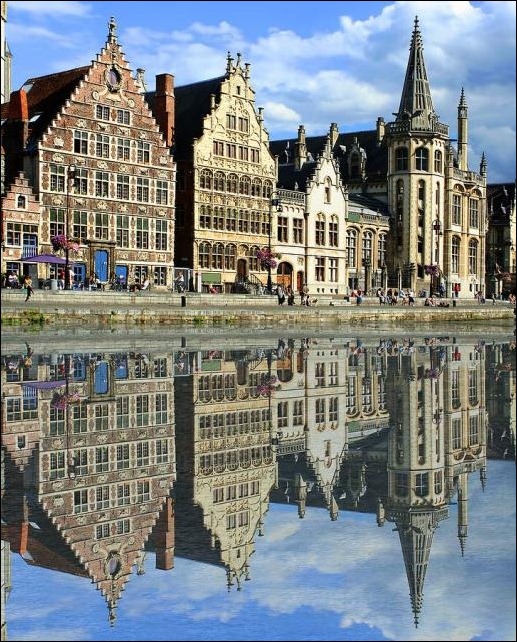 Photo: Bigstock / gvictoria
Photo: Bigstock / gvictoriaGhent is one of the largest cities in Belgium as well as one of the most beautiful. Its architecture is a mix of new and old, with medieval structures still standing. The city has a quaint look, as you can see in the spectacular image of gabled houses reflected in the city’s canal. As of a 2008, Ghent had 594,582 inhabitants.
15. Montreal, Canada
 Photo: Bigstock / fintastique
Photo: Bigstock / fintastiqueNamed for the three-peaked hill in the middle of the city (Mont Royal), Montreal is home to 1,620,693 people (as of 2006) and is the second largest city in Canada. You can't see it in this wonderful reflection of the city’s skyscrapers, but Montreal is made up of islands.
source Amazing Photos Of Cities Reflected In Water, Nice n Funny
4. Sacramento, CA, USA
 Photo: Bigstock / Andy777
Photo: Bigstock / Andy777Sacramento is the capital of the state of California and has a population of 466,488. The city’s famous Tower Bridge can be seen reflected in this exquisite image.
13. Lisbon, Portugal
 Photo: Bigstock / gvictoria
Photo: Bigstock / gvictoriaThis stunning city is one of the oldest in the world, and even a mere glimpse of it shimmering in the water suggests it has a style all its own. The reflection in the river almost makes the skyline look like a multi-colored crocodile! Lisbon has a population of 545,245 within its city limits and is one of the most visited cities in Europe.
12. Los Angeles, CA, USA
 Photo: Bigstock / rebelml
Photo: Bigstock / rebelmlLos Angeles is the second most populous city in America with a population of 3,792,621. With Hollywood in its bosom, it’s often called the ‘Entertainment Capital of the World’, and this brightly lit reflection only adds to that aura.
11. Luxembourg, Grand Duchy of Luxembourg
 Photo: Bigstock / Yarchyk
Photo: Bigstock / YarchykLuxembourg is actually a commune that has been given the status of a city in the Grand Duchy of Luxembourg. The old quarters and fortifications have been marked as UNESCO world heritage sites. The metropolitan area, which includes some other communes, has 103,973 inhabitants. The image shows the river Alzette, as still as glass, with houses backing right up to its banks and reflected in its waters.
10. Boston, MA, USA
 Photo: Bigstock / fintastique
Photo: Bigstock / fintastiqueThe old New England city of Boston has a population of 617,594. Founded by Puritan colonists in 1630, those settlers would surely never recognize this modern skyline, reflected wonderfully in the Charles River.
9. Milwaukee, WI, USA
 Photo: Bigstock / stevieg
Photo: Bigstock / steviegReflected in this lovely lagoon are some of Milwaukee’s modern skyscrapers – a sign, perhaps, of its change from being almost exclusively a beer town (it was once home to four massive breweries) to one with many different facets. Milwaukee’s population is 594,833.
8. Madrid, Spain
 Photo: Bigstock / Jo Chambers
Photo: Bigstock / Jo ChambersThe modern meets the ancient in this photo: the relatively recent buildings reflected in the water abut the ancient Egyptian gateways of the Temple of Debod. Madrid itself is the capital of Spain and a major economic force with a population of 3,273,049.
7. Atlanta, GA, USA
 Photo: Bigstock / aberenyi
Photo: Bigstock / aberenyiAtlanta is sometimes known as the 'City in a Forest' because of the number of trees it contains. This reflection of modern buildings meeting nature was photographed at Lake Clara Meer in Piedmont Park – a treasure the population of 420,003 must surely enjoy.
6. Hong Kong
 Photo: Bigstock / fintastique
Photo: Bigstock / fintastiqueHong Kong has an incredible natural harbor, which you see here reflecting some of its 7,650 skyscrapers. Its population of over seven million people is squeezed into an area just 426 miles square, making it one of the most densely populated places of the planet.
5. Manila, Philippines
 Photo: Bigstock / benigs
Photo: Bigstock / benigsWith 1,660,714 inhabitants (as of 2007), Manila is one of the most heavily populated cities in the Philippines and is also considered the world’s most densely populated city. Even so, this reflection of its buildings in the harbor gives a sense of airy space.
4. Perth, Australia
 Photo: Bigstock / PeteC
Photo: Bigstock / PeteCTied for eighth place in the Economists’s 2011 list of most livable cities is Australia’s Perth. This photograph – which was taken from verdant Kings Park and shows the city center reflected in Swan River – gives you one idea why. A large city, Perth has a population of 1,696,062.
3. Singapore
 Photo: Bigstock / palangsi
Photo: Bigstock / palangsiSingapore is a city-state made up of 63 islands, with a population of 5,183,700. It is a mix of green spaces and urban development – but the authorities are fast reclaiming land for the latter. Here we see the metropolis’ skyline reflected wonderfully in water.
2. New York City, NY, USA
 Photo: Bigstock / Zigi
Photo: Bigstock / ZigiThe most populous city in the United States, the beehive of activity that is New York is home to 8,175,133 million people inhabiting an area of just 305 square miles. Yet at night, the shimmering beauty of the Big Apple’s famous skyline reflects magnificently in the waters around it.
1. Vancouver, Canada
 Photo: Bigstock / Tunde Pecsvari
Photo: Bigstock / Tunde PecsvariVancouver is a large city on the west coast of Canada with a population of more than 640,000 people. There are some stunning scenes to be found here – like this one. As photographer Tunde Pecsvari describes it: “The skyline made of skyscrapers and modern buildings meets a piece of nature in Stanley Park. Everything reflects on the calm water of the sea.” Wonderful.
source Amazing Photos Of Cities Reflected In Water, Nice n Funny
Leaning Towers From Around the World
A leaning tower is a tower which, either intentionally, due to errors in design, construction or to subsequent external influence, does not stand perpendicular to the ground. This list is about these unusual buildings.
source Leaning Towers From Around the World, Nice n Funny
1. Two Towers of Bologna, Italy
 |
| photo source - Katpix |
The Two Towers, both of them leaning, are the symbol of the city. The taller one is called the Asinelli while the smaller but more leaning tower is called the Garisenda. The taller Asinelli Tower is built in the 10th century. It is 97 m (318 ft) high with a 2,23 meter (7,3 ft) inclination The base was modified in 1488 to house guards. The smaller is Garisenda Tower, a contemporary of its neighbor. Its strong inclination (3,22 m or 10,6 ft) is striking, caused by an earlier greater settling of the land.
2. Big Ben, London, UK
2. Big Ben, London, UK
The British Parliament's Clock Tower (more commonly known as Big Ben) is leaning north-west by 0.26 degrees, or 17 inches (43.5cm), according to documents that were recently made public. The level of the tilt has increased to 0.9 millimeters a year since 2003, and it seems that underground developments including a parking lot and an extension of the London Underground have caused the problem.
3. Leaning Church Tower of Suurhusen, Germany
3. Leaning Church Tower of Suurhusen, Germany
The Leaning Tower of Suurhusen is a late medieval steeple in Suurhusen, a village in the East Frisian region of northwestern Germany. According to the Guinness World Records it was the most tilted tower in the world, though in 2010 the newly erected Capital Gate tower in Abu Dhabi claimed this record. The Suurhusen steeple remains the world's most leaning tower that is unintentionally tilted, beating the world-famous Leaning Tower of Pisa by 1.22 degrees.
4. Bad Frankenhausen Church Tower, Germany
4. Bad Frankenhausen Church Tower, Germany
The central German spa town of Bad Frankenhausen is home to a tower more crooked than Pisa's. The sinking phenomenon was first observed in 1650, and has been progressing steadily ever since. The tower is perched on a hillside on the edge of town and looks like it could keel over in a stiff breeze. Locals insist the structure is sturdy and say no one has abandoned the row of tidy homes sitting about 75 feet (23 m) from the tower's base. At least not yet. Engineers have noticed that the speed with which the tower is falling has picked up recently, with the spire now moving 2.4 inches (6 cm) a year. At that rate, it could reach a tipping point in the next decade or so. Local and state government officials have agreed to spend $1.5 million to try to stabilize the tower.
5. Leaning Tower of Pisa, Italy
5. Leaning Tower of Pisa, Italy
The Leaning Tower was supposed to stand straight and plumb, an imperious monument to the trading power of 12th century Pisa. Built on soft clay, however, the tower began to list only a few years after construction began. Upon completion in 1350, the tower leaned about four and half feet, but as time passed, the angle of the 16,000-ton tower became more precarious. By 1990, the tower leaned about 13 feet (4 m) off kilter, and nearly two million pounds of lead ingots had to be placed on one of its sides to prevent its collapse. But the nearest the tower has been to destruction had nothing to do with its famed tilt. Allied forces ordered an American sergeant to blow it up during World War II when they thought the Germans were using it as an observation post. Only the reticence of the 23-year-old American saved the tower.
source Leaning Towers From Around the World, Nice n Funny
6. The Leaning Tower of Nevyansk, Russia
source Leaning Towers From Around the World, Nice n Funny
 |
| photo source |
 |
| photo source |
 |
| photo source |
 |
| photo source |
 |
| photo source |
source Leaning Towers From Around the World, Nice n Funny
Creative And Strange Chandeliers And Lights
Bird's Eye View Of Paris
Photo — Link
France - A country of romance and love, fine dining, French champagne, cognac legendary and the highest wealth tax in Europe.
Photo — Link
Photo — Link
source Bird's Eye View Of Paris, Nice n Funny
Bridges Light at Night - Amazing
Most Complex Roads In The World
1) Col de Turini, France
Situated more than 1 mile above sea level, Col de Turini is a mountain pass situated in south of France in the Alps. It’s also part of a 20 miles rally stage of the Monte Carlo Rally of WRC, which combines 34 challenging hairpins and long stretches where cars top 111 mph. It is one of the most exciting roads on Earth. The pass was featured in the very first episode of Top Gear series 10, when the presenters went in search of the greatest driving road in the world. At its highest point, Col de Turini is 1607m high. In the north, the Col de Turini starts with a dazzling series of hairpins. Finally, we end up riding in a gorge, with a wild river on the left, and a steep rock-wall on the right.
2) Stelvio Pass, Italy
Located in the Eastern Alps in Italy, the Stelvio Pass Road connects the Valtellina with Merano and the upper Adige valley. This mountain road pass is situated at an altitude of around 1.7 miles above sea level. The road is particularly challenging to drive due to the presence of 48 hairpin bends, with the road becoming exceedingly narrow at some points, and some very steep inclines. With a height of 2757 meters, it is the highest paved mountain pass in the Eastern Alps and the second highest in the Alps, after the 2770 m high Col de l’Iseran. While it might not be as dangerous as the other routes, it is certainly breathtaking. The toughest and most spectacular drives are from the Prato side. The mountain pass is one of the best continuous hairpin routes in the world.
3) Leh–Manali Highway, India
The Leh-Manali Highway is situated in India and spans over a length of 297 miles among the Himalaya mountain range. It passes through some of the worlds highest mountain passes in the world, with a mean altitude in between 2 to 3 miles above sea level. The road is one of the most complicated and challenging roads in the world, with snow, landslides and terrain making the journey exceedingly difficult for anything other than a capable four wheel drive vehicle. The road was built and is maintained by the Indian Army.
4) The Puxi Viaduct, Shanghai
This is one of Shanghai’s busiest and largest interchange that caters to thousands of vehicles every hour. It has five levels of bridges that help connect two of the cities busiest highways, directing vehicles without much fuss.
5) The Judge Harry Pregerson Interchange, LA
The Judge Harry Pregerson Interchange is situated in Los Angeles, CA and is one of the most complicated interchanges in the country. It permits entry and exit in all directions between the I-105 and the I-110. It’s a stack interchange with layers of bridges making a complicated network of roads allowing smooth flow of traffic though both the interstate highways. This interchange was opened in 1993. It is a 4 level interchange with a restricted access lane that can be used by high-occupancy vehicles.
6) Gravelly Hill Interchange, Birmingham, UK
Gravelly Hill Interchange, nicknamed ‘the Spaghetti Junction’, is the 6th junction of the M6 motorway, where it joins the A38 Aston Expressway in Birmingham, UK. The name “Spaghetti Junction” was coined by Roy Smith, a journalist from the Birmingham Evening Mail in the 1970s. The areal view of the junction sure tells us why it is called the Spaghetti Junction. Spanning an impressive 30 acres, the junction serves 18 routes and includes 4 km of slip roads. Across 6 different levels, there are 559 concrete columns, reaching up to 24.4 m in height. The engineers had to elevate 13.5 miles of the motorway to accommodate 2 railway lines, 3 canals, and 2 rivers. It’s the most complicated junction in United Kingdom.
7) Trollstigen in Norway
The Fjord in Norway has many roads that attract tourists. The most notable among them is the Trollstigen which is a series of stunning roads with a breathtaking view of a few waterfalls. The word Trollstigen means the Troll Ladder. The road, though not lacking in safety standards, takes a lot of concentration and driving skill to conquer. The vertigo-inducing steep inclines, intense set of hairpins and narrow roads leave no margin for error. However, once you are at the top, the view is just breathtaking. The narrow road leaves us with extremely few possibilities for vehicles to pass each other. The frequent rockfalls in the region have resulted in some upgrades to the road in 2005. At the top, there is a viewing balcony which overlooks the road and the Stigfossen waterfall, a 320 m long waterfall which falls down the mountain side.
8) Los Caracoles Pass in Andes
This road passes though the Andreas Mountains on the way between Chile and Argentina. Los Caracoles is a series of hard switchbacks on an extremely steep incline. The road has many steep inclines and hairpins without any safety guard rails. The road is covered with snow for the most part of the year. The snow together with nature of the road requires extreme patience and skill to negotiate. However, this road is maintained pretty regularly and does not have a morbid accident record. Cargo trucks and even double-Decker tourist buses travel through the road on a daily basis, and it’s quite an experience.
9) Lysebotn Road, Norway
This is probably the most fun road you can travel on four wheels, and then maybe on your two legs checking out the various hiking trails leading from the area. In fact, this might be considered the most breathtaking place in Europe. It all starts with the narrow road up the steep walls of the Lysefjord, Norway. It has 27 switchbacks and a 1.1 km long tunnel at the bottom, with 3 switchbacks inside. The last 30 km of Lysebotn road is a true roller-coaster! It’s narrow but has a perfect surface, winding left and right all the time. If you happen to ride a motorcycle in Norway, then this is the road you simply cannot afford to miss!
source Most Complex Roads In The World, Nice n Funny
Situated more than 1 mile above sea level, Col de Turini is a mountain pass situated in south of France in the Alps. It’s also part of a 20 miles rally stage of the Monte Carlo Rally of WRC, which combines 34 challenging hairpins and long stretches where cars top 111 mph. It is one of the most exciting roads on Earth. The pass was featured in the very first episode of Top Gear series 10, when the presenters went in search of the greatest driving road in the world. At its highest point, Col de Turini is 1607m high. In the north, the Col de Turini starts with a dazzling series of hairpins. Finally, we end up riding in a gorge, with a wild river on the left, and a steep rock-wall on the right.
2) Stelvio Pass, Italy
Located in the Eastern Alps in Italy, the Stelvio Pass Road connects the Valtellina with Merano and the upper Adige valley. This mountain road pass is situated at an altitude of around 1.7 miles above sea level. The road is particularly challenging to drive due to the presence of 48 hairpin bends, with the road becoming exceedingly narrow at some points, and some very steep inclines. With a height of 2757 meters, it is the highest paved mountain pass in the Eastern Alps and the second highest in the Alps, after the 2770 m high Col de l’Iseran. While it might not be as dangerous as the other routes, it is certainly breathtaking. The toughest and most spectacular drives are from the Prato side. The mountain pass is one of the best continuous hairpin routes in the world.
3) Leh–Manali Highway, India
The Leh-Manali Highway is situated in India and spans over a length of 297 miles among the Himalaya mountain range. It passes through some of the worlds highest mountain passes in the world, with a mean altitude in between 2 to 3 miles above sea level. The road is one of the most complicated and challenging roads in the world, with snow, landslides and terrain making the journey exceedingly difficult for anything other than a capable four wheel drive vehicle. The road was built and is maintained by the Indian Army.
4) The Puxi Viaduct, Shanghai
This is one of Shanghai’s busiest and largest interchange that caters to thousands of vehicles every hour. It has five levels of bridges that help connect two of the cities busiest highways, directing vehicles without much fuss.
5) The Judge Harry Pregerson Interchange, LA
The Judge Harry Pregerson Interchange is situated in Los Angeles, CA and is one of the most complicated interchanges in the country. It permits entry and exit in all directions between the I-105 and the I-110. It’s a stack interchange with layers of bridges making a complicated network of roads allowing smooth flow of traffic though both the interstate highways. This interchange was opened in 1993. It is a 4 level interchange with a restricted access lane that can be used by high-occupancy vehicles.
6) Gravelly Hill Interchange, Birmingham, UK
Gravelly Hill Interchange, nicknamed ‘the Spaghetti Junction’, is the 6th junction of the M6 motorway, where it joins the A38 Aston Expressway in Birmingham, UK. The name “Spaghetti Junction” was coined by Roy Smith, a journalist from the Birmingham Evening Mail in the 1970s. The areal view of the junction sure tells us why it is called the Spaghetti Junction. Spanning an impressive 30 acres, the junction serves 18 routes and includes 4 km of slip roads. Across 6 different levels, there are 559 concrete columns, reaching up to 24.4 m in height. The engineers had to elevate 13.5 miles of the motorway to accommodate 2 railway lines, 3 canals, and 2 rivers. It’s the most complicated junction in United Kingdom.
7) Trollstigen in Norway
The Fjord in Norway has many roads that attract tourists. The most notable among them is the Trollstigen which is a series of stunning roads with a breathtaking view of a few waterfalls. The word Trollstigen means the Troll Ladder. The road, though not lacking in safety standards, takes a lot of concentration and driving skill to conquer. The vertigo-inducing steep inclines, intense set of hairpins and narrow roads leave no margin for error. However, once you are at the top, the view is just breathtaking. The narrow road leaves us with extremely few possibilities for vehicles to pass each other. The frequent rockfalls in the region have resulted in some upgrades to the road in 2005. At the top, there is a viewing balcony which overlooks the road and the Stigfossen waterfall, a 320 m long waterfall which falls down the mountain side.
8) Los Caracoles Pass in Andes
This road passes though the Andreas Mountains on the way between Chile and Argentina. Los Caracoles is a series of hard switchbacks on an extremely steep incline. The road has many steep inclines and hairpins without any safety guard rails. The road is covered with snow for the most part of the year. The snow together with nature of the road requires extreme patience and skill to negotiate. However, this road is maintained pretty regularly and does not have a morbid accident record. Cargo trucks and even double-Decker tourist buses travel through the road on a daily basis, and it’s quite an experience.
9) Lysebotn Road, Norway
This is probably the most fun road you can travel on four wheels, and then maybe on your two legs checking out the various hiking trails leading from the area. In fact, this might be considered the most breathtaking place in Europe. It all starts with the narrow road up the steep walls of the Lysefjord, Norway. It has 27 switchbacks and a 1.1 km long tunnel at the bottom, with 3 switchbacks inside. The last 30 km of Lysebotn road is a true roller-coaster! It’s narrow but has a perfect surface, winding left and right all the time. If you happen to ride a motorcycle in Norway, then this is the road you simply cannot afford to miss!
source Most Complex Roads In The World, Nice n Funny
Beauty of Bolivia









http://www.nicenfunny.com/








































































